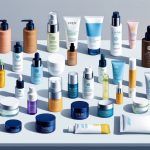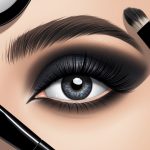Best Hair Care Routine for Damaged Hair: Expert Tips for Stronger, Healthier Hair
Dealing with damaged hair can be frustrating, especially when dryness, breakage, and split ends seem impossible to control. The best hair care routine for damaged hair focuses on gentle cleansing, deep conditioning, targeted treatments, and mindful daily practices that work together to restore strength and moisture.
Understanding the unique needs of compromised hair is essential for anyone hoping to bring back shine, softness, and resilience.
By following expert tips and evidence-backed guidance, anyone can build a hair care routine that helps repair, fortify, and protect their strands. Incorporating nourishing ingredients like fatty acids, silk proteins, hyaluronic acid, and conditioning oils supports ongoing repair.
Simple adjustments in washing frequency and styling help minimize further stress. For those looking to transform brittle, weak hair, a step-by-step approach to healthy hair care delivers noticeable results and long-lasting improvements.
Understanding Damaged Hair
Hair damage can manifest in several ways and is often the result of specific external factors and habits. Recognizing the signs of damage and understanding its forms is essential for proper care and prevention.
Common Causes of Hair Damage
Damaged hair is typically the result of repeated exposure to stressors such as heat styling, chemical treatments, and environmental aggressors. Hair dryers, straighteners, and curling irons apply intense heat to the hair shaft, which can weaken the structure and strip away moisture.
Chemical treatments like bleaching, coloring, perming, or relaxing break down the protective cuticle and leave strands more vulnerable to damage. Bleach and high-lift hair dyes are especially harsh, leading to protein loss and increased porosity.
Tight hairstyles and frequent brushing can also cause mechanical damage and hair breakage. Environmental factors, such as UV rays, pollution, and chlorinated or salty water, gradually deplete the hair’s natural oils and lead to dryness.
How to Identify Signs of Damage
Signs of damaged hair are usually visible and tactile. Common symptoms include split ends, dryness, frizz, and a lack of shine.
Brittle hair that snaps easily is a clear indicator of compromised strength. When hair loses elasticity, it may stretch and break more readily during brushing or styling.
The texture of damaged hair often feels rough to the touch, and the ends may appear frayed or uneven. Increased tangling and excessive shedding, especially during washing or combing, are further warning signs of underlying issues that need attention.
Different Types of Damage in Hair
Hair damage can be categorized based on its cause and appearance. Heat damage leads to limp, lifeless strands with reduced bounce, often after frequent use of styling tools.
Chemical damage manifests as extreme dryness, weak spots, and changes in texture after procedures like bleaching or coloring. Mechanical damage involves breakage and split ends due to aggressive detangling or tight hairstyles.
Environmental damage typically presents as dryness and dullness, especially in hair exposed to sun, wind, or polluted air. The extent and type of damage can be influenced by individual hair type, with finer or curly hair often being more susceptible to certain forms of damage.
Building the Best Hair Care Routine
A healthy hair care routine for damaged hair centers on targeted products, mindful techniques, and consistency. Key steps include gentle cleansing, effective moisturizing, and strategic use of treatments that address breakage, dryness, and overall damage prevention.
Essential Steps for Damaged Hair
Damaged hair requires a disciplined, gentle approach. Begin with a sulfate-free shampoo to cleanse without stripping natural oils.
Apply conditioner generously, focusing on the mid-lengths and ends to restore moisture balance. For weekly care, consider a deep conditioning mask with proteins and fatty acids to strengthen brittle strands.
Avoid excessive heat styling; opting to air-dry can limit further damage. Detangle cautiously with a wide-tooth comb, especially when hair is wet and most vulnerable.
Using leave-in conditioners or hair oils containing nourishing ingredients like argan or coconut oil adds an extra layer of protection. Shield hair from UV and environmental stressors with hats or UV-protection sprays when outside.
Creating a Personalized Haircare Routine
Building a custom haircare routine starts with understanding individual hair type and lifestyle. People with colored or chemically processed hair should use products designed to repair and protect, while those experiencing dryness will benefit from rich, hydrating treatments.
Factors such as wash day frequency, exercise habits, and climate influence the choice of products and techniques. Track how hair responds to each step—keeping a basic journal can help identify what works and what does not.
If scalp health is an issue, incorporate scalp treatments that address oiliness or dandruff. Adjust the regimen as seasons change; for example, winter may require heavier conditioners, while summer calls for lighter formulas and more damage prevention from the sun.
For additional guidance, readers can explore expert-backed advice for a damaged hair routine.
Frequency and Consistency of Care
Consistent care is key to reversing and preventing further hair damage. Most experts suggest washing 2-3 times per week, but frequency should adapt to hair type, oil production, and styling habits.
Over-washing can lead to increased dryness, so spacing out wash days helps preserve natural moisture. Weekly treatments such as masks or protein treatments should be scheduled regularly for optimal benefits.
Avoid skipping steps like conditioning and heat protection, as these build cumulative benefits over time. For guidance on crafting the right frequency and preventing overuse of styling tools, see recommendations for a healthy hair routine.
Choosing the Right Shampoos and Conditioners
For damaged hair, product selection directly affects hydration, strength, and overall resilience. Key choices in nourishing shampoos, moisturizing conditioners, and sulfate-free formulas help rebuild and maintain healthier hair structure day by day.
Nourishing Shampoos
Nourishing shampoos restore strength and vitality to damaged hair by gently cleansing while delivering essential nutrients. Look for products containing shea butter, argan oil, keratin, or protein complexes because these ingredients support hair repair and reduce breakage.
A nourishing shampoo should remove dirt and oil without stripping moisture. Many formulas include antioxidants and amino acids that support the scalp and promote new growth.
Brands frequently advertise strengthening benefits, but choosing a shampoo verified for damaged or brittle hair is essential. Users should seek options labeled for deep hydration or damage repair.
Cleansing less frequently, such as every 2-3 days, minimizes excessive dryness and allows natural oils to protect the strands. Information about best practices is available on expert hair care sites such as Rev320.



